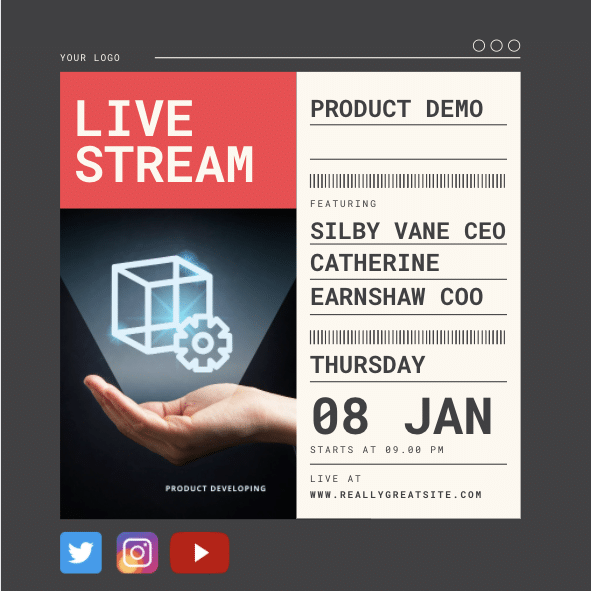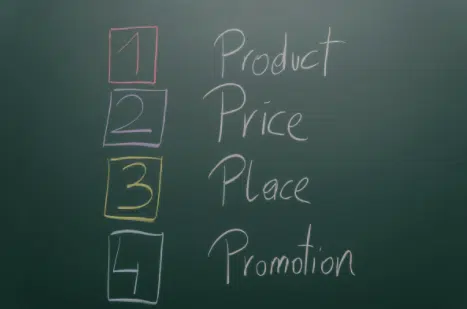From paintings on cave walls to tales told around the campfire, stories have played an essential part in how humans communicate. Therefore, it is no surprise that storytelling for businesses has become an increasingly popular area of focus for marketers.
The way we communicate with other people has been changing for decades, and it’s no different when it comes to videos. These days, video storytelling can be used in many different ways – from marketing a product to explainer videos to content marketing, social media or the story of why you started your company. No matter the narrative, there are many techniques that you can apply to tell better stories in your videos.
Video Storytelling Tips
If you are reading this then the chances are that you’re considering adding, or have already added, video to your marketing. In this post, we will explore ways you can use video storytelling techniques in your company or brand video to help engage audiences on social media, drive views and or sell and promote products or services!
Steal or Repurpose other content formats
One of the easiest video storytelling tips is to use those long blog posts, or the podcast you recorded as the base for your next video. Use this content as the base script or outline and convert it into an engaging piece of video content.
A video is a great way to repurpose content because you can include visuals and sound that will help your audience understand the message better than just text or audio alone. You can use the video to visually call out important points that may otherwise have been missed or better explain complicated concepts or ideas.
The key here is that your story is already written and all you need do is reimagine it.

Use video storytelling to create empathy and a human touch
Stories are a great marketing tool and are inherently human. The more you can tell a story, drive emotion and connect with your brand to your audience’s emotions in your video, the better.
One way to do this is by using video testimonials to tell a story. A video testimonial that has customers state, “I love the product because….” allows you to tell a story that instantly has social proof. Or you could look at influencer marketing by having advocates with followings promote your business for you.
Don’t be afraid to go live
In a similar way, Live Streaming is a great way for brands to connect storytelling directly and emotionally with their audience. It also allows you the opportunity for immediate feedback and to power engagement. This can be invaluable when it comes time to edit or even when just deciding what content should go into future videos!
Viewers will often forgive you for low-quality production values if the content is of a high enough quality and so going live can be a very easy way to capture a compelling story or interview. (And of course, the video recording can be repurposed at a later date – see above)

Get inspiration from TV
Whilst the online video world is where most brand marketers play TV can also be a great source of storyline inspiration.
- Think about what you like to watch and why?
- Do the characters in these shows have anything that might resonate with your audience?
- Which programmes are popular among people who share similar interests like yours (finance for example)?
- Research the storylines, how they’re structured and what characters do in them. (see story arcs)
- Check out TV programme or video clips on YouTube for example to see if there are any that might help inspire you with a storyline of your own!
Whilst you might not use all these tips just one might give you a new way to think about how to present your brand, product or service.
Be yourself and don’t hide from conflict
Conflict in storytelling provides many opportunities for drama, emotion and suspense which provides the power to hook in viewers. It can also be a great way to show the audience who you are as an individual or brand in your video, so don’t shy away from it!
If there is anything in your companies life that has caused conflict then use this opportunity for storytelling – just make sure not to dwell on these moments but use them as triggers instead to move onto more positive zones.

For example…
Use a story arc in your video storytelling
It’s a surprising fact that many stories follow a standard story arc or narrative structure. It’s not a coincidence that the most popular films, TV programmes and books are structured in this way.
It can be helpful to think about a story arc for your marketing video script.
There are many story arcs (see below) but the three stages usually consist of introduction (setting the scene) – conflict (challenge or struggle) climax resolution- (a conclusion which ties up loose ends.)
Use a narrative voiceover to tell the story of your company and product/service.
Storyboarding your video helps make it more memorable. Having a voice tell your brand story can really bring your video home.
One easy way to achieve this in your video is by using video interviews with someone from within or outside the business. Customers for example provide a real sense of authenticity. Senior management can bring a face to your brand and tell the story about what makes up your business. The key is making sure there’s some sort of personal connection between the individual on camera and the storyline the video follows. It needs to be authentic or carry emotion so people feel they’re getting more than “just another commercial.” You want them to feel connected emotionally to your message because if not, why should anyone else care?
Visual storytelling
Show don’t tell. Of course, it is not only your script that helps with the story. Videos are very visual and you want to make sure that the visuals are telling a story as well.
The simplest way is to use b-roll footage. B-roll footage could be a stock video, archive footage, different camera angles or any shot that can be used to support the words being spoken or that appear on the screen. To step it up a notch though you might look at motion graphics as a way to call out specific ideas, concepts or data points.
Introduce characters
Characters are an essential part of any good story and can also be used in your company or brand storytelling video. A character is a person who takes the role of protagonist, antagonist, or supporting player in your plot. They can be human, animal, fictional or real-life people from history or literature. The most important point to remember though is that they should have their own personality traits and quirks that make them unique and memorable to the audience.
You want someone who will resonate with your audience but doesn’t have to be to be likeable; some may serve as foils for other more likeable characters.
Use the 4P’s of brand storytelling
In classical marketing, there are four essential elements to a brand story: Purpose, People, Places and Products. These components can still be relevant today and used in unison or separately to assist you in a narrative that will strengthen your brand’s identity within your video.

The four P’s are a framework for understanding and analyzing marketing, which is why they’re still relevant today and for your video story.
- Purpose – what do you want your audience to do after those video views?
- People – who should be in your video and where should it take place?
- Place – where should the location of the video be filmed?
- Product – what product or service will be featured in the video?
Consider your audience
In movies, you need to consider your audiences. The same goes for your video story. Your audience attention will be different depending on the type of video you are producing.
As a storyteller, some basic research can go a long way. Understanding the needs, wants, pain points and desires of your target audience can help shape your video storytelling. Your research might also look at data. What has worked before? Which other ads seem to resonate with your audience? Even PPC ads can give you some clues as to the narrative direction you might take.
“The goal should always remain focused around making people feel something or what do I want my viewers feeling after watching?” ” – Dan Pontefract.
Whilst your story might not be a direct sales pitch getting under the skin of your audience can go a long way to shaping your videos.
Storytelling in video content can be tricky
You have to make sure you’re telling a story that will connect with your audience, but also stand out from the rest of the videos out there.
When it comes to storytelling in business videos, you want to make sure you don’t do something boring or cliche. It’s easy for people to get bored when they see familiar ideas and phrases over and over again.
There are many different ways of doing storytelling in marketing and business videos, so it’s important that you find a way that works best for your company and product or service. The key is finding what is unique about your company and creating an authentic story around it. This will help set your brand apart from others while maintaining an emotional connection with customers who watch the video(s).
Further Thoughts…
How do you create Persuasive Storytelling in your company video marketing to make your Value Proposition Matter?
Include showing real-life examples through testimonials from customers that have engaged with your brand or have No. Storytelling is still a powerful tool in marketing and it’s not going anywhere anytime soon.
“Story-Telling helps us understand the world around, which can lead to better decision making” – Dan Pontefract
What are some of the most common techniques used in a storytelling video?
As we mentioned earlier story arcs present a framework to maintain attention spans. Here are eight that you can use;
- Rags to Riches (rise) All stories move, but some stories only have one movement. …
- Riches to Rags (fall) …
- Man in a Hole (fall then rise) …
- Icarus / Freytag’s Pyramid (rise then fall) …
- Cinderella (rise then fall then rise) …
- Oedipus (fall then rise then fall)
- The Pixar Framework (see below)
- Hero’s Journey (see below)
Get Your Video Storytelling Techniques Basics Right
Plot. What is the story about?
Plot twists. What are some events that happen to disrupt and complicate your protagonist’s journey (often at a pivotal moment in their lives)?
Purpose. What is the purpose of your video story?
What do you want viewers to take away from watching it and why should they care about that particular outcome for our protagonist/antagonist- what’s important, how will this impact their life etc.?
People. Who are the characters or people in your story?
What are their roles? Who is the protagonist and what does he/she want to achieve or get out of this story (e.g., a character trying to find love, something they’ve lost, etc.)
Place. Where does your story take place?
What are the major events that happen in your video and how do these people get involved or react to them? How does this character’s development unfold as a result of their participation; what effect will it have on him/her, others around her etc.? What is he/she trying t accomplish with their actions at each stage?
Audience. Who is the intended audience of your video?
How does your character’s actions or development relate to viewers? How will they react and what effect would it have on them. What are their goals for watching your videos – do these coincide at all with those of the main protagonist in order to find out how successful you’ve been as a storyteller, viewer reactions might be different?
Distribution. How will your video reach its target audience?
How does this influence the type of content you are able to include in it? What would be a good distribution strategy for your video that will maximize exposure and minimize cost, while still maintaining high production values. Will it be run as an ad or across social media?
Regardless of the platform as with any other medium or art form storytelling is also an integral part of getting your video viewed.
Use the Pixar story outline as a framework to build from
One thing you can’t argue with is that Pixar are one of the best storytellers out there. Well many of there stories can be broken down in to this framework.

Once upon a time there was ___.
Every day, ___.
One day ___.
Because of that, ___.
Because of that, ___.
Until finally ___.
The Hero’s Journey
The Hero’s Journey is a great framework for crafting video stories. Joseph Campbell first presented this framework in his book “The Hero with a Thousand Faces.“
The heroes journey is essentially an overarching story that can be seen in a number of well-known stories but the same frame can be used in a brands video storytelling. The stages of the Heroes Journey are:
- The Ordinary World: the hero’s place before beginning his or her adventure. This stage is often nostalgic and shows a normal life in contrast with what follows in later stages of the story.
- Departure from Normal Life, or call to the adventure where our character leaves behind this world to start on their journey
- Tests or Tribulations on the Journey: this is where our hero may be tested, faced with temptations or other challenges that can push him/her to their limit
- The Transformation. At this point, our hero is transformed from what they were before to what their life will be like after the transformation
- The Return: this is when our hero has completed his or her journey and returns to normal life… but changed.

———-
Wooshii is an innovative video production company with the capacity to create video anywhere in the world, in any format, using a talent network of over 16,000 plus experts. Wooshii works with world-leading organisations across multiple industry sectors to enable consistent and reliable video production at scale, supporting a wide variety of internal and external marketing and communication functions.
Need help devising your video strategy or perhaps want to discuss your productions needs, give Wooshii a call today.




